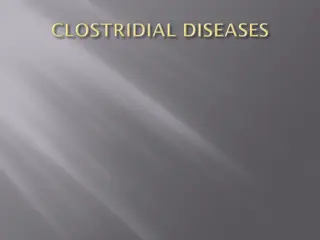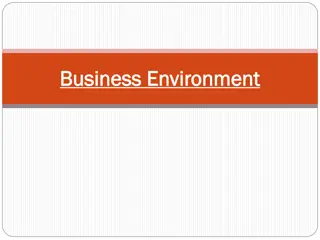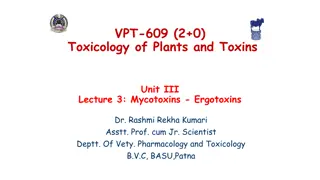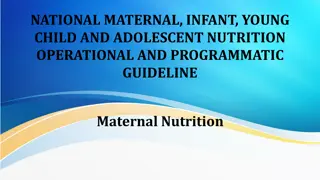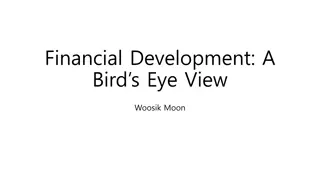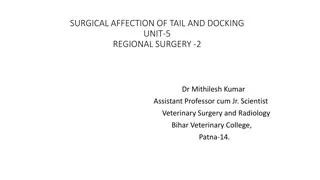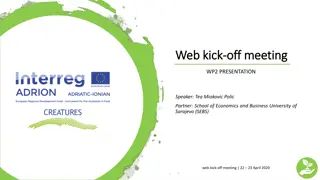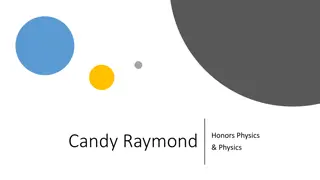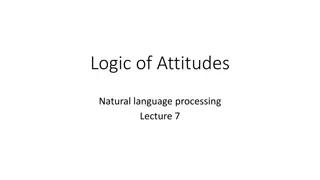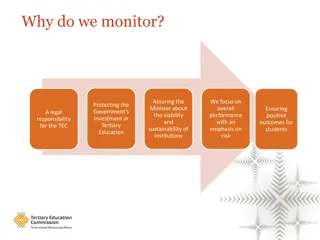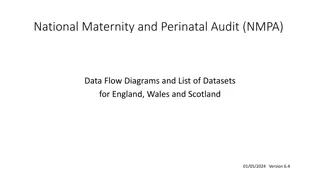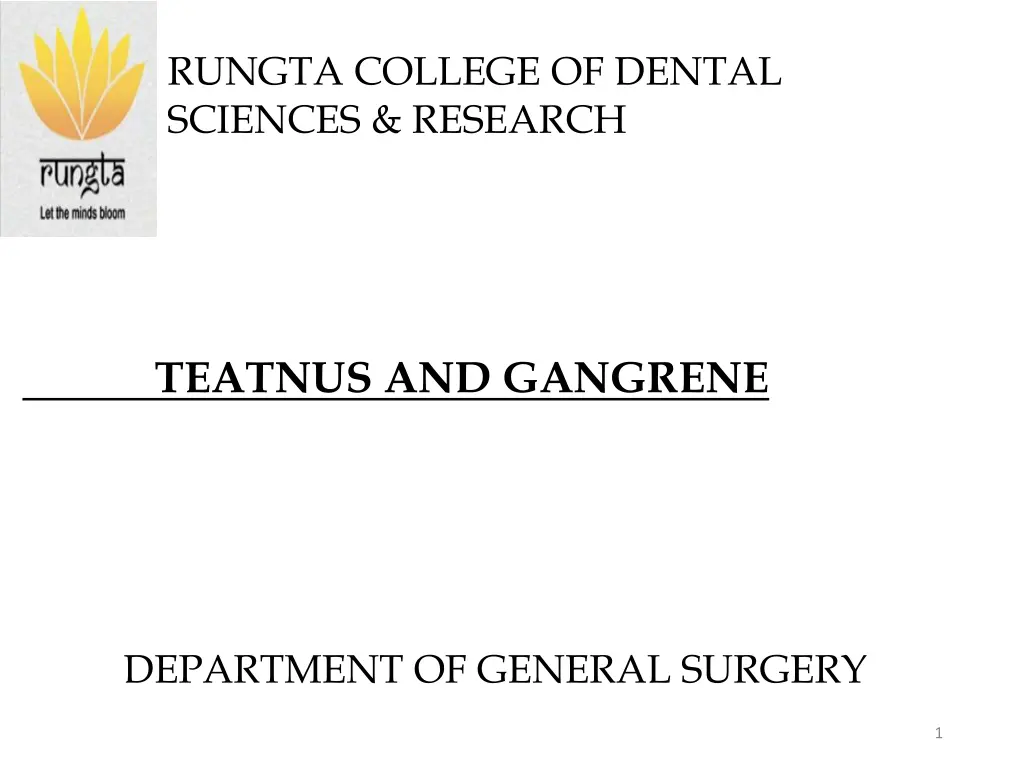
Understanding Gas Gangrene: Causes, Symptoms, and Treatment
Gas gangrene is an acute infective condition caused by clostridia organisms, leading to rapid tissue destruction and potentially fatal outcomes if not promptly treated. This article explores the causes, symptoms, and treatment options for gas gangrene, shedding light on the clinical features and pathogenesis of this dangerous condition.
Download Presentation

Please find below an Image/Link to download the presentation.
The content on the website is provided AS IS for your information and personal use only. It may not be sold, licensed, or shared on other websites without obtaining consent from the author. If you encounter any issues during the download, it is possible that the publisher has removed the file from their server.
You are allowed to download the files provided on this website for personal or commercial use, subject to the condition that they are used lawfully. All files are the property of their respective owners.
The content on the website is provided AS IS for your information and personal use only. It may not be sold, licensed, or shared on other websites without obtaining consent from the author.
E N D
Presentation Transcript
RUNGTA COLLEGE OF DENTAL SCIENCES & RESEARCH TEATNUS AND GANGRENE DEPARTMENT OF GENERAL SURGERY 1
Specific learning Objectives At the end of this presentation the learner is expected to know ; Core areas* Domain ** Category # Cognitive Must Know TETANUS GAS GANGRENE Cognitive Must Know 2
Table of Content ABSCESS TETANUS GAS GANGRENE 3
GAS GANRENE It is an acute infective gangrene caused by clostridia organisms. These organism produces gases.If not treated in time, it spread rapidly leading to septicaemia and death This disease mainly affects the skeletal muscles,hence other names are-Clastr. Myonecrosis,clastr.myositis.
Organisms a) Clostridium welchii b) Clo.septicum c) Clo.histolyticus d) Clo.odematiens etc. These are Gram +ve Central spore bearing Non-motile Capsulated organism
Toxins produced by organisms Lecithinase- haemolytic membranolytic and necrotic Haemolysin- blood destruction Hyaluronidase- rapid spread of gas gangrene Protinease- breakdown of proteins & collegen. Gas produced-hydrogen sulfide AND ammonia
Pathogenesis Spores enters through wound, during road accident/ crush injury SPORES GERMINATE Developed bacteria multiply and releases exotoxins These exotoxins have multifaceted destructive effect on tissues Extensive necrosis of muscle with production of gas H2S and Amonia. When it affect liver, there is necrosis with frothy blood---- FOAMING LIVER is characteristic. Septicaemia MODS Death
Clinical features:- Incubation periods- 1-2 days Local features Gross oedema & tenderness Sutures are under tension Brownish fluid with odour Palpable crepitus Colour changes in muscles Skin is khakhi coloured due to haemolysis.
General features- anxious & alert toxic and ill tachycardia with hypotension Vomitting fever
Investigation Routin blood and urine examination Liver function test. Blood urea. Serum creatinine. X-ray shows gas in muscle plane or under skin.
TYPES OF GAS GANGRENE Clostridial cellulitis- involved.There is feature of cellulitus. It is a mild infection and easily manageable. Local type:- infection confined to single muscle Group type:- infection confined to one group of muscle. Massive type:- gas gangrene involves entire limb. Healthy muscles is not Fulminant type:- rapid progress leading to toxaemia, renal failure and MODS & often death.
Treatment of a established case Inj. Benzyl penicillin 20 lakh 4 hourly or Inj. Metronidazole 500 mg 8 hourly Fresh blood transfusion Polyvalent anti-gas gangrene serum, 25000 unit I.V after test dose, repeat after 6 hour Hyper-baric oxygen Electrolyte & water management, may require ventilator support
LOCAL TREATMNET OF WOUND All dead and necrotic tissue are excised and debridement is done until healthy tissue bleeds.Foreign bodies are removed and wound is thoroghly irrigated with savlon etc. In some cases partial or entire limb amputation may be required to save the life.
PROPHYLAXIS FOLLOWING MESURES TO BE TAKEN TO PREVENT DEVELOPMENT OF GAS GANGRENE. Thorough wound care ( debridement). Precaution during tourniquet application Precaution during plaster cast application Use of AGGS in SUSPECTED, contaminated wounds. THE END
TETANUS It is an serious infective condition caused by CLOSTRIDIUM TETANY bacteria leading to reflex muscles spasm, often associated with tonic-clonic convulsion.
Aetiopathogenesis- Clostridium Tetani organism. Gram-positive Anaerobic Motile Noncapsulated Peritrichous flagella Terminal Spores are infective and they are found in soil, manure, dust etc. Disease is caused by spore (drum stick appearance).
Pathogenesis- the organism produces 2 types of toxins. 1.Tetanospasmin :: It has affinity for nervous tissue. The toxin get fixed to the motor cells of ant. horn cells. It inhibits the release of cholinester -- --age enzyme and at spinal level causes reflex spasm of muscles due to any stimuli. 2.Tetanolysin :: (Haemolysin) -It causes the destruction of RBC. The toxin which is fixed to nervous tissue can not be neutralised, however circulating toxins can be neutralized. Incubation period-It may vary from few days to months or years. The more important aspect is the time interval between the appearance of first symptom to the muscle spasm. If it is less than 48 hrs, prognosis is poor.
Mode of entry-Any wound contaminated with dust, soil, manure or rusted iron pricks may lead to development of tetanus. so, following means may favour development of tetanus. 1. minor or major trouma 2. septic abortion 3. umbilical sepsis in new born 4. after surgical operation,specially on gastro-intestinal tract. NO WOUND, NO TETANUS
CLINICAL FEATURES SYMPTOMS- 1. Stiffness of muscles of jaw(lock jaw) muscles of back and neck. 2. .Anxiousness and sweating 3. .Headache,delirium,sleeplessness 4. .Dysphagia 5. .Dyspnea. 6. Tonic seizures involve sudden stiffening and contraction of the muscles. (Clonic seizures involve rhythmic twitching or jerking of one or several muscles.Tonic-clonic seizures are a combination of these two types in a specific pattern and are a type of generalized seizure.)
SIGNS.- D/D Trismus Risus Sardonicus Neck rigidity Spasm and rigidity of all muscles Hyperflexia Tonic-clonic convulsions Retention of urine due to spasm Symptoms will be aggravated by stimuli (light, noise etc.) Opisthotonus, Orthotonus, Emprosthotonus, Pleurosthotonus Strychnine poisoning Trismus due other local reason Hydrophobia Epilepsy
Tetanus lockjaw
Various terms used to describe different tetanic affection: 1. Tetanus neonetorum 2. Bulbar tetanus ( highly fatal) 3. Latent tetanus (disease develops many month after injury) 4. Local tetanus 5. Cephalic tetanus 6. Peurperal tetanus 7. Post operative tetanus 8. Otitis tetanus
Staging of Tetanus 1.Mild tetanus- * only tonic rigidity without spasm or dysphagia. 2.Serious ill- * patient is having dysphagia and reflex spasm. 3.Dangerously ill- * Patient is having in addition to above, major cynotic convulsions
INVESTIGATION 1. All relevent tests to rule out the diseases shown in differential diagnosis(D/D). 2.Culture media for Cl.Tetany are- RCM media or in Nutrient Agar
TREATMENT A) General treatment B) Specific treatment C) Prophylaxis
GENERAL TREATMENT 1. Admission in isolation unit in hospital. 2. Avoid noise and lights in the room. 3. Care of wound- 4. Anti-tetanus serum (now, rarely used.)After test dose,50,000 units IM and 50,000 units IV is given. 5. Anti-tetanus globulin(ATG) it is preferred choice. It is given 3000- 4000 units IM. No test is required. 6. Inj. crystalline penicillin 10 lakh unit, every 6hrly for 7-10 days is the drug of choice. 7. Metronidazole 500mg IV every 8hrly is good option. 8. Good nursing care- Care of urinary blader, bed sore, Ryles tube feeding and care to prevent injury during spasm .
SPECIFIC MANAGEMENT Mild cases - 1. Heavy sedation-using cocktail drugs to relieve spasm and convulsion. 1.Chlorpromazine 50-100 mg ,every 6hrly. 2.Phenobarbitone 30-60 mg ,every 6hrly 3.Diazepam 10-20 mg ,every 6hrly. These drugs are used in such a way that patient receive one or the other drug every 2hrly. 2. Inj.diazepam 10mg,Tracheostomy Laryngoscope, endotrachel tube etc are kept in the room to tackle emergency. set,
SERIOUSLY ILLDysphagia and respiratory problems are marked. Nasogastric tube for feeding and if nessesory, tracheostomy are done along with sedation. DANGEROUSLY convulsions, they require heavy sedation along with drug induced muscles paralysis and patient is put on positive pressure ventilation. ILL - Patient having Cyanotic ******
PROPHYLAXIS 1.Immunisation to mother during pregnancy. 2.Primary and booster doses of DPT to infant and children. 3.After injury to indidual,if he has not received booster dose in last 5 yrs,one shot of TETANUS toxoid is to be given. 4.Proper debridement and care of wound. 5.In contaminated and suspected wound,250 units of ATG to be given around the wound. CAUSE OF DEATH 1.aspiration pneumonia 2.Laryngeal spasm-respiratory arrest,cardiac arrest.
REFERENCES SRBS BOOK OF GENERAL SURGERY A MANUAL ON CLINICAL SURGERY - S DAS MANIPAL MANUAL OF SURGERY - K RAJGOPAL SHENOY BAILEY AND LOVES SHORT PRACTICE OF SURGERY 41
Question & Answer Session You may ask your doubts related to the topic? 42
THANK YOU 43




